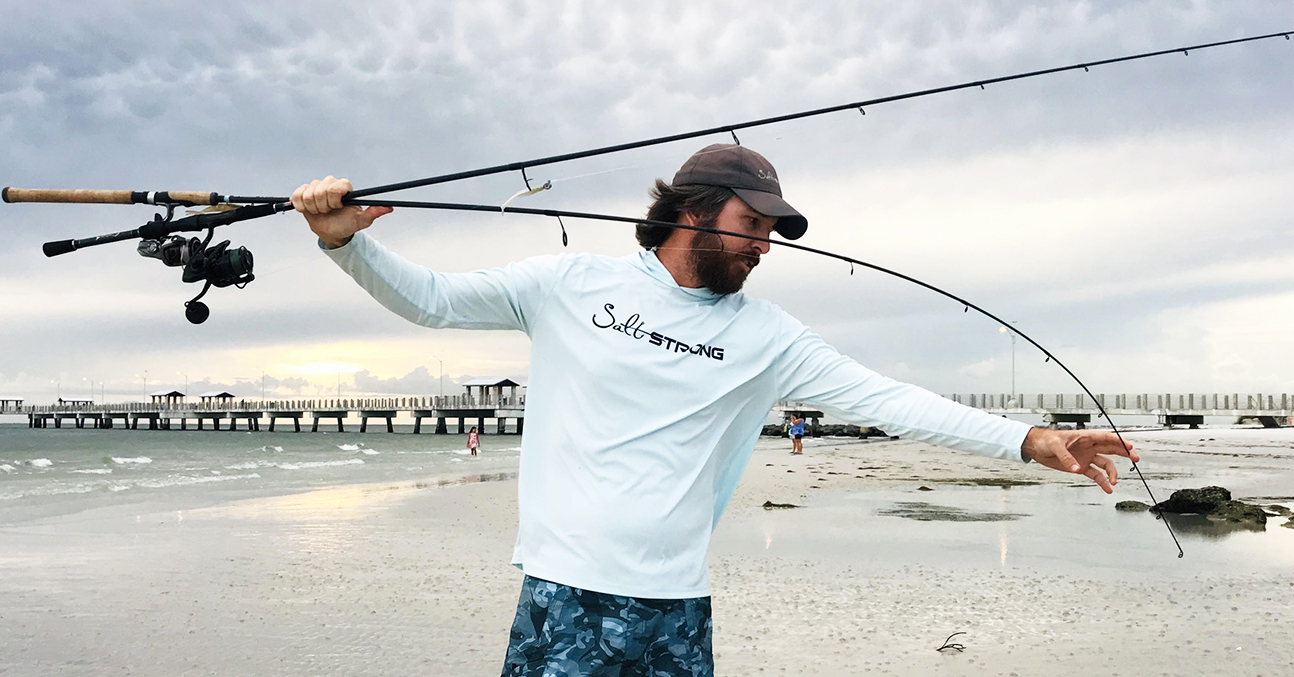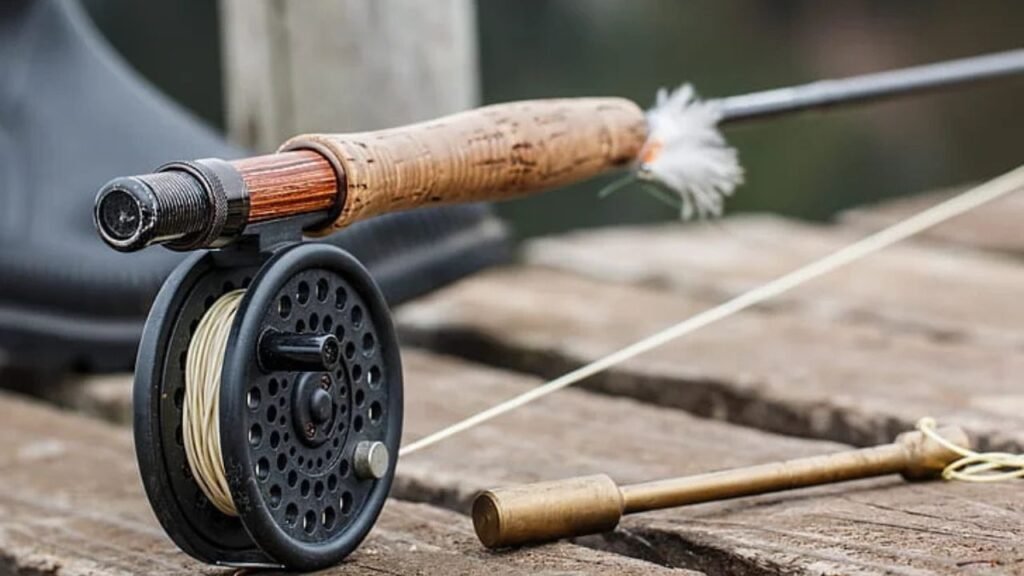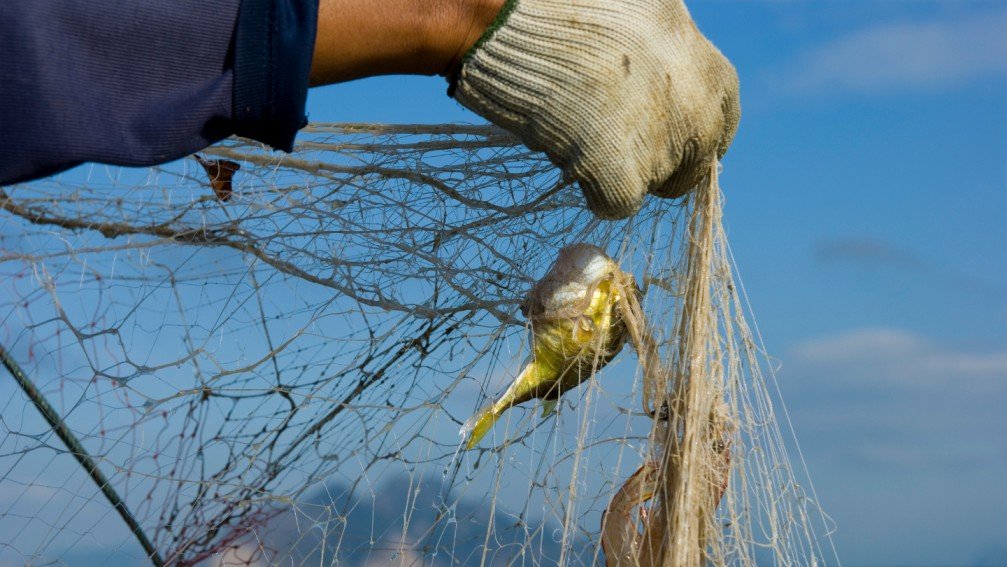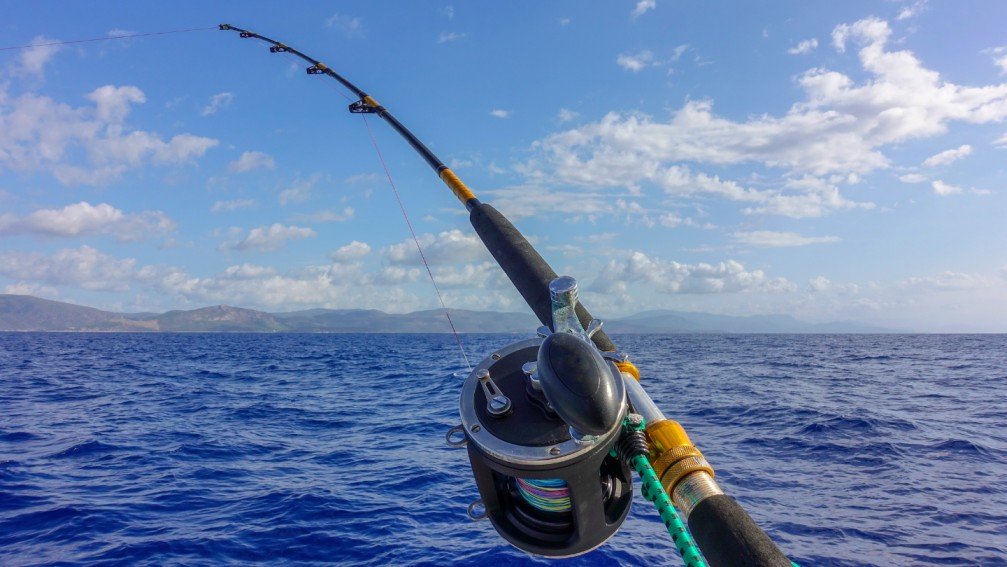Choose a saltwater fishing rod by considering its length, power, and action. Match the rod to your target species and fishing style.
Selecting the right fishing rod for saltwater is crucial for a successful angling experience. The rod length affects casting distance and control. Power determines the rod’s strength and lifting ability, while action influences sensitivity and hook-setting capability. Saltwater rods must withstand harsh marine environments, so durability and corrosion resistance are key.
Understanding these factors helps in choosing a rod that suits your specific needs. Whether targeting small inshore fish or large offshore species, the right rod enhances performance and enjoyment. Always match your rod to the type of fish and conditions you will encounter. Research and try different rods to find the perfect match for your saltwater fishing adventures.
Types Of Saltwater Fishing Rods
Choosing the right saltwater fishing rod is crucial for a successful fishing trip. Different types of rods are designed for specific techniques and conditions. Understanding these will help you make an informed choice.
Spinning Rods
Spinning rods are popular for their versatility. They are easy to use and great for beginners. These rods have a fixed reel seat and large guides. They work well for casting light lures and baits.
Spinning rods are ideal for catching species like:
- Redfish
- Trout
- Bluefish
Baitcasting Rods
Baitcasting rods are perfect for experienced anglers. They offer more control and accuracy. These rods have a revolving spool reel. Baitcasting rods are excellent for heavier lures and baits.
Common targets for baitcasting rods include:
- Snook
- Tarpon
- Musky
Surf Rods
Surf rods are designed for fishing from the shore. They are long and sturdy, perfect for casting over the waves. Surf rods allow you to reach distant fish. They are built to handle big fish and rough conditions.
Surf rods are often used for:
- Striped bass
- Bluefish
- Sharks
Jigging Rods
Jigging rods are specialized for vertical jigging techniques. They are short, strong, and sensitive. These rods help you detect bites deep underwater. Jigging rods are perfect for targeting bottom-dwelling fish.
Ideal species for jigging rods include:
- Grouper
- Snapper
- Amberjack
Material Selection
Choosing the right material for your saltwater fishing rod is crucial. The material affects the rod’s performance, durability, and sensitivity. Here’s a breakdown of the most common materials to help you make an informed decision.
Graphite Rods
Graphite rods are popular for their lightweight and sensitivity. They allow anglers to feel even the slightest bites. Graphite rods are also very strong, making them ideal for catching larger fish. These rods offer excellent casting distance and accuracy. However, they tend to be more expensive than other materials.
Fiberglass Rods
Fiberglass rods are known for their durability and flexibility. They are often heavier than graphite rods but can withstand rough handling. Fiberglass rods are less sensitive, making them suitable for beginners. They are also more affordable, making them a great choice for those on a budget.
Composite Rods
Composite rods combine the best features of graphite and fiberglass. These rods offer a balance of sensitivity, strength, and durability. Composite rods can handle a variety of fishing conditions. They are versatile and can be used for different types of fish. Although they are generally more expensive, their versatility makes them a worthwhile investment.
| Material | Key Features | Best For |
|---|---|---|
| Graphite | Lightweight, Sensitive, Strong | Experienced Anglers, Large Fish |
| Fiberglass | Durable, Flexible, Affordable | Beginners, Budget-Conscious Anglers |
| Composite | Balanced Features, Versatile | All Skill Levels, Various Fish Types |
Rod Length Considerations
Choosing the right fishing rod length is crucial for saltwater fishing. The length impacts casting distance, accuracy, and control. Different lengths serve different purposes. Here, we will explore short, medium, and long rods.
Short Rods
Short rods measure between 5 to 7 feet. They offer great control and strength. These rods are perfect for fishing in tight spaces. They also excel in battling large fish. Short rods provide higher precision in casting. They are ideal for pier or kayak fishing.
Medium Rods
Medium rods range from 7 to 9 feet. They offer a good balance between control and casting distance. Medium rods are versatile and can handle various fishing conditions. They are suitable for surf fishing and boat fishing. Anglers can target both small and large fish with medium rods.
Long Rods
Long rods are typically over 9 feet in length. They allow for longer casting distances. These rods are excellent for surf fishing and open-water fishing. Long rods offer better leverage when reeling in fish. They are ideal for targeting species like striped bass and tarpon.
| Rod Length | Ideal Use | Benefits |
|---|---|---|
| Short Rods (5-7 feet) | Pier, Kayak Fishing | High Precision, Great Control |
| Medium Rods (7-9 feet) | Surf, Boat Fishing | Versatile, Balanced Performance |
| Long Rods (9+ feet) | Surf, Open-water Fishing | Long Casts, Better Leverage |
- Short rods are best for high precision.
- Medium rods offer versatility.
- Long rods excel in casting distance.
Rod Power And Action
Choosing the right fishing rod for saltwater can be tricky. Two key factors to consider are Rod Power and Action. Understanding these can greatly improve your fishing experience. This guide breaks down these concepts to help you make an informed decision.
Understanding Power
Rod Power refers to the rod’s strength or lifting power. It determines how much weight the rod can handle before it bends. Power ratings range from Ultra-Light to Heavy. Here’s a quick breakdown:
| Power Rating | Description |
|---|---|
| Ultra-Light | Best for small fish and light lures |
| Light | Suitable for small to medium fish |
| Medium | Versatile, handles medium-sized fish |
| Heavy | Ideal for large fish and heavy lures |
Understanding Action
Rod Action describes how much of the rod bends when you apply pressure. It also affects how fast the rod returns to its original position. Action is classified as Slow, Medium, or Fast. Here’s a closer look:
- Slow Action: Bends throughout the rod length. Good for casting long distances.
- Medium Action: Bends in the top half. Offers a balance of flexibility and power.
- Fast Action: Bends mostly at the tip. Ideal for quick hook sets and sensitivity.
Matching Power And Action
Matching the right Power and Action is crucial for a successful fishing trip. Here are some tips:
- Light Power + Slow Action: Great for small fish and delicate presentations.
- Medium Power + Medium Action: Versatile for various saltwater species.
- Heavy Power + Fast Action: Perfect for big game fishing and heavy lures.
Understanding these factors helps you choose the right rod for your saltwater adventures.
How to Choose a Fishing Rod: Expert Tips for Anglers
Handle And Grip Choices
Choosing the right handle and grip is crucial for saltwater fishing. Your comfort and control depend on it. Different materials and styles offer unique benefits. Let’s dive into the options.
Cork Handles
Cork handles are popular for their comfort and grip. They provide a natural feel and are lightweight. Cork also absorbs vibrations, enhancing sensitivity. This helps detect even the slightest bites. Cork handles are usually more expensive but worth the investment.
Eva Foam Handles
EVA foam handles offer durability and comfort. They are resistant to water and UV rays. This makes them ideal for saltwater conditions. EVA foam handles are also easier to clean. They provide a firm grip, even when wet. They are more affordable compared to cork.
Split Grip Vs Full Grip
Split grips are lighter and offer better balance. They are popular for casting rods. Split grips expose more of the rod blank. This can increase sensitivity. Full grips offer more comfort for long fights with big fish. They provide a more secure hold. Full grips are better for trolling and bottom fishing.
| Feature | Cork Handles | EVA Foam Handles |
|---|---|---|
| Comfort | High | Medium |
| Durability | Medium | High |
| Sensitivity | High | Medium |
| Price | Higher | Lower |

Credit: www.saltstrong.com
Guides And Reel Seats
Choosing the right fishing rod for saltwater involves understanding guides and reel seats. These components are crucial for performance and durability. This section explains the different types, qualities, and how to choose the best reel seat for your needs.
Types Of Guides
Guides are the rings on the rod that direct the line. There are different types:
- Single-foot guides: Light and good for casting accuracy.
- Double-foot guides: Stronger, better for heavy lines and big fish.
- Roller guides: Reduce friction, ideal for trolling and big-game fishing.
Quality Of Guides
Guide quality affects the rod’s performance. Look for these features:
- Ceramic inserts: Reduce line wear and friction.
- Stainless steel frames: Resist corrosion, essential for saltwater.
- High-quality epoxy: Keeps guides firmly attached to the rod.
Choosing A Reel Seat
The reel seat holds your reel in place. Here’s what to consider:
- Material: Graphite reel seats are lightweight. Aluminum seats are more durable.
- Size: Ensure the reel seat fits your specific reel.
- Comfort: Look for cushioned or ergonomic designs for long fishing sessions.
By focusing on the types and quality of guides and choosing the right reel seat, you can enhance your saltwater fishing experience.
Budget And Brand Considerations
Choosing the right fishing rod for saltwater adventures involves considering both your budget and the brand. This ensures you get the best value for your money. Let’s explore these aspects in detail.
Setting A Budget
Before you buy a fishing rod, set a clear budget. Knowing how much you can spend helps narrow down your choices. Consider the following points:
- Entry-level rods: $50 – $100
- Mid-range rods: $100 – $200
- High-end rods: $200 and above
Think about how often you will fish. Frequent anglers may need to invest in higher quality. Occasional fishers might opt for budget-friendly options.
Reputable Brands
Choosing a reputable brand ensures quality and reliability. Some well-known brands include:
| Brand | Price Range | Special Features |
|---|---|---|
| Penn | $50 – $300 | Durability, corrosion resistance |
| Shimano | $70 – $400 | Precision, lightweight design |
| Daiwa | $60 – $350 | Advanced technology, strength |
Check reviews and ratings before making a purchase. A well-reviewed brand often means satisfied customers.
Value For Money
Ensure the fishing rod offers good value for its price. Look for features like:
- Material quality: Graphite or carbon fiber rods are strong and light.
- Guides: Stainless steel or ceramic guides last longer.
- Handle: EVA foam or cork handles provide better grip.
Balance the features with the cost. Aim to get the best rod within your budget. A little research can go a long way in finding the perfect rod.

Credit: m.youtube.com
Additional Features
Choosing a fishing rod for saltwater involves evaluating several factors. One key aspect is understanding the additional features that can enhance your fishing experience. These features can vary greatly and impact your success and enjoyment. Here, we explore three crucial features: line weight ratings, rod sensitivity, and custom vs factory rods.
Line Weight Ratings
Line weight ratings indicate the range of line weights a rod can handle. This is crucial for balancing your rod with the proper fishing line. Look for the rod’s line weight rating, usually marked on the rod blank.
- Light Line Weight: Suitable for smaller fish species.
- Medium Line Weight: Ideal for a variety of medium-sized fish.
- Heavy Line Weight: Best for large, strong fish species.
Choosing the correct line weight ensures better casting and control. It also prevents rod breakage and enhances fish-fighting power.
Rod Sensitivity
Rod sensitivity is the rod’s ability to transmit vibrations from the line to your hand. This feature helps detect bites and underwater structures.
- High Sensitivity: Made from materials like graphite, great for detecting subtle bites.
- Medium Sensitivity: Composite rods offer a balance between sensitivity and strength.
- Low Sensitivity: Fiberglass rods are durable but less sensitive, ideal for heavy-duty fishing.
Highly sensitive rods help in catching elusive fish and provide a better feel of the underwater environment.
Custom Vs Factory Rods
Choosing between custom and factory rods depends on personal preference and budget.
| Feature | Custom Rods | Factory Rods |
|---|---|---|
| Customization | Tailored to specific needs, unique design. | Standard designs, limited customization. |
| Cost | Generally more expensive. | Usually more affordable. |
| Availability | Made to order, longer wait times. | Readily available in stores and online. |
Custom rods offer personalized features but come at a higher cost. Factory rods provide consistency and are budget-friendly.
Expert Tips For Maintenance
Proper maintenance is key to extending the life of your saltwater fishing rod. Regular cleaning, smart storage, and routine inspections can keep your rod in top shape. Follow these expert tips to ensure your fishing rod performs its best on every trip.
Cleaning Tips
Saltwater can corrode your fishing rod. Cleaning it after each use is crucial.
- Rinse the rod with fresh water after every fishing trip.
- Use a soft cloth to wipe down the rod and remove salt.
- For stubborn dirt, use a mild soap and water solution.
- Dry the rod thoroughly with a clean towel.
Storage Advice
Proper storage keeps your rod safe from damage.
- Store your rod in a cool, dry place away from direct sunlight.
- Use a rod rack to prevent bending or warping.
- Avoid leaning the rod against walls; it can cause stress on the blank.
- Cover the rod with a cloth or rod sock to keep dust away.
Regular Inspections
Routine inspections can catch small issues before they become big problems.
| Inspection Area | What to Look For |
|---|---|
| Rod Guides | Check for cracks or corrosion. |
| Reel Seat | Ensure it is tight and secure. |
| Rod Blank | Look for any scratches or nicks. |
| Handle | Inspect for wear and tear. |

Credit: fishingbooker.com
Choosing the right saltwater fishing rod can enhance your fishing experience. Consider factors like rod material, length, and power. Always match your rod to the type of fish you’re targeting. Proper research and understanding will help you make an informed choice.
Enjoy your time on the water with the perfect fishing rod.
FAQs:
How To Pick The Right Saltwater Fishing Rod?
Choose a saltwater fishing rod by considering rod length, power, action, material, and reel compatibility. Match rod power to target fish size. Opt for corrosion-resistant materials.
What Kind Of Fishing Rod Do I Need For Salt Water?
For saltwater fishing, use a corrosion-resistant rod. Choose medium to heavy power, with a fast action tip. Ensure it’s suitable for your target fish species.
What Is The Best Length For A Saltwater Fishing Rod?
The best length for a saltwater fishing rod is typically between 7 to 12 feet. Shorter rods offer better control, while longer rods cast farther. Choose based on your fishing style and target species.
How Do You Match A Saltwater Rod And Reel?
Choose a rod that matches the reel’s line capacity and target species. Ensure the rod’s action suits your fishing style.



